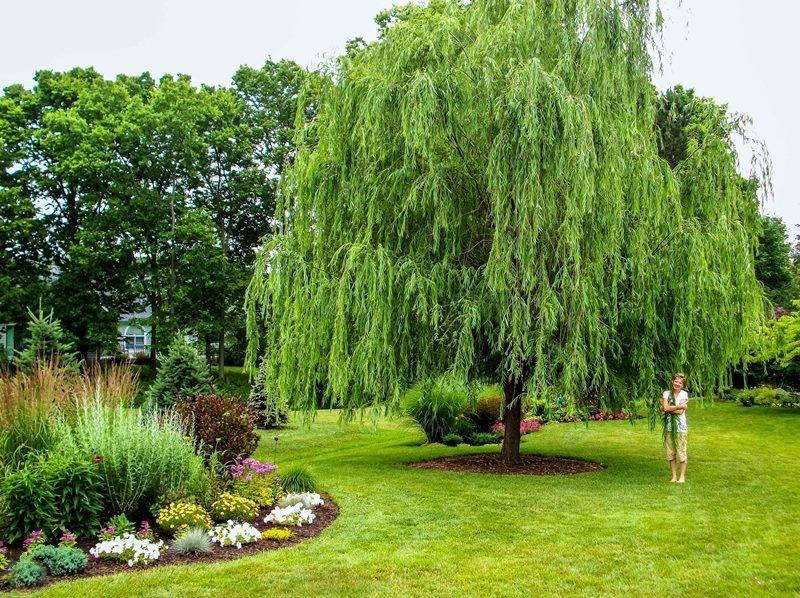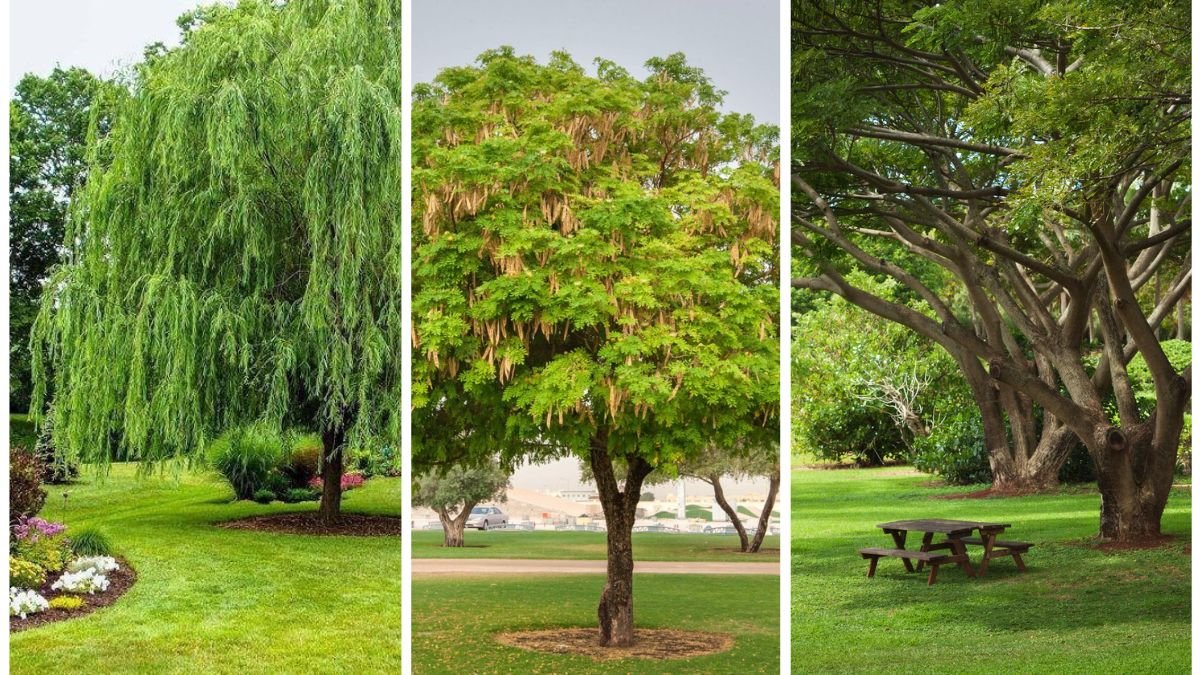As summer temperatures soar, finding relief under the cool canopy of a tree becomes a cherished luxury. Shade trees are not only functional—they transform outdoor spaces, reduce energy costs, improve air quality, and create habitats for wildlife. But not all trees are created equal when it comes to providing summer shade. Selecting the right tree requires consideration of canopy size, growth rate, leaf density, and seasonal characteristics.
In this article, we’ll explore which trees provide the most shade in summer, their key features, and practical planting advice to help you design a cooler, more comfortable outdoor environment.
Why Shade Trees Matter

Shade trees serve multiple purposes beyond cooling:
- Reduce Heat – A mature shade tree can lower air temperature around your home by several degrees, providing natural relief from heatwaves.
- Lower Energy Bills – By shading roofs and windows, trees reduce the need for air conditioning in summer.
- Prevent Soil Erosion – Tree canopies soften rainfall, reducing runoff and protecting garden soil.
- Improve Air Quality – Leaves filter pollutants and produce oxygen, enhancing overall air quality.
- Increase Property Value – Landscaped properties with mature shade trees often command higher market value.
Choosing trees that maximize shade can enhance these benefits while creating a visually appealing landscape.
Characteristics of Ideal Shade Trees

When selecting a shade tree, consider these key traits:
- Broad Canopy – A wide-spreading canopy provides maximum coverage.
- Dense Foliage – Leaves that grow close together block more sunlight.
- Fast Growth Rate – Quick-growing trees offer shade sooner but may require more maintenance.
- Adaptability – Trees should thrive in local soil, climate, and urban conditions.
- Seasonal Interest – Deciduous trees provide summer shade and allow winter sunlight, while evergreens offer year-round coverage.
Top Shade Trees for Summer
Here are some of the best trees that provide exceptional shade in summer:
1. Oak (Quercus spp.)

Why It’s Ideal for Shade
Oaks are among the most iconic shade trees. Their expansive canopies, strong branches, and dense foliage make them perfect for cooling large areas.
Key Features
- Height & Spread: 50–80 feet tall, 60–100 feet wide depending on species.
- Leaf Type: Deciduous, dense foliage.
- Growth Rate: Moderate to fast.
- Additional Benefits: Acorns feed wildlife, and the strong wood is long-lasting.
Popular Varieties
- Quercus rubra (Red Oak) – Fast-growing with a wide canopy.
- Quercus alba (White Oak) – Slow-growing but extremely long-lived and sturdy.
Planting Tips
- Plant in full sun for optimal canopy development.
- Space generously to allow lateral growth.
- Deep watering during establishment promotes strong roots.
2. Maple (Acer spp.)

Why It’s Ideal for Shade
Maples are fast-growing trees with broad leaves that form thick summer shade. They also offer stunning fall color, adding year-round appeal.
Key Features
- Height & Spread: 40–70 feet tall, 40–60 feet wide.
- Leaf Type: Broad deciduous leaves.
- Growth Rate: Fast to moderate, depending on variety.
- Additional Benefits: Vibrant autumn foliage enhances garden beauty.
Popular Varieties
- Acer saccharum (Sugar Maple) – Iconic shade tree with dense canopy.
- Acer rubrum (Red Maple) – Adaptable to various soils, fast-growing.
Planting Tips
- Prefer moist, well-drained soil.
- Mulch around the base to retain soil moisture.
- Prune young trees to encourage strong branching.
3. Linden (Tilia spp.)
Why It’s Ideal for Shade
Lindens are elegant shade trees with heart-shaped leaves and dense foliage. They are excellent for street planting or larger gardens, providing both shade and fragrance.
Key Features
- Height & Spread: 50–80 feet tall, 40–60 feet wide.
- Leaf Type: Broad deciduous leaves.
- Growth Rate: Moderate.
- Additional Benefits: Summer flowers attract bees and pollinators.
Popular Varieties
- Tilia cordata (Littleleaf Linden) – Compact canopy, ideal for urban gardens.
- Tilia americana (American Linden) – Large canopy, provides deep shade.
Planting Tips
- Plant in full sun to partial shade.
- Regular watering in the first 2–3 years ensures root establishment.
- Prune selectively to maintain canopy shape.
4. Sweetgum (Liquidambar styraciflua)

Why It’s Ideal for Shade
Sweetgum trees offer large, star-shaped leaves that form a thick, spreading canopy. They also bring brilliant fall colors, making them both functional and ornamental.
Key Features
- Height & Spread: 60–75 feet tall, 40–50 feet wide.
- Leaf Type: Broad deciduous leaves.
- Growth Rate: Fast.
- Additional Benefits: Provides habitat for birds; fall foliage is striking.
Planting Tips
- Tolerates a wide range of soils but prefers well-drained locations.
- Avoid planting too close to structures due to aggressive root systems.
- Mulch to retain moisture and protect young roots.
5. Elm (Ulmus spp.)
Why It’s Ideal for Shade
Elms are classic shade trees with wide, arching canopies. Disease-resistant cultivars are now widely available, making them suitable for urban landscapes.
Key Features
- Height & Spread: 40–70 feet tall, 40–80 feet wide.
- Leaf Type: Deciduous, dense canopy.
- Growth Rate: Fast.
- Additional Benefits: Provides extensive shade quickly and is highly resilient.
Popular Varieties
- Ulmus americana ‘Princeton’ – Resistant to Dutch elm disease.
- Ulmus parvifolia (Chinese Elm) – Compact, adaptable, and long-lived.
Planting Tips
- Plant in full sun for optimal growth.
- Maintain distance from sidewalks to accommodate wide roots.
- Regular pruning encourages strong structure and airflow.
Tips for Maximizing Shade
- Space Trees Properly
Consider canopy width to prevent overcrowding and ensure maximum coverage. - Pair Fast and Slow Growers
Plant a mix of quick-growing trees for immediate shade and slower-growing species for long-term coverage. - Prune Strategically
Remove dead or crossing branches to maintain canopy density without compromising airflow. - Use Mulch and Watering
Mulch preserves soil moisture, while regular watering helps trees grow thick, leafy canopies. - Consider Deciduous vs. Evergreen
Deciduous trees offer summer shade and winter sunlight, while evergreens provide year-round protection but may block winter sun.
Environmental Benefits of Shade Trees
Shade trees do more than provide relief from the sun:
- Lower Urban Heat: Trees reduce heat islands in cities by shading pavements and buildings.
- Reduce Energy Use: Shaded homes require less air conditioning.
- Support Wildlife: Shade trees offer food and shelter for birds, insects, and small mammals.
- Prevent Stormwater Runoff: Canopy interception reduces soil erosion and water pollution.
Final Thoughts
When it comes to enjoying a cool, comfortable summer, shade trees are indispensable. The right selection—whether oaks, maples, lindens, sweetgums, or elms—can transform your garden or yard into a shaded oasis, protect your property, and support local wildlife.
By considering canopy size, leaf density, growth rate, and maintenance needs, you can choose trees that not only provide optimal shade but also enhance the beauty and ecological value of your landscape. Proper planting, pruning, and care will ensure that your shade trees flourish for decades, creating a sustainable, comfortable, and visually stunning outdoor environment.
Whether your goal is a backyard retreat, street-side greenery, or large garden shade, the trees listed above are proven champions for keeping spaces cool and inviting during the hottest months of the year.
